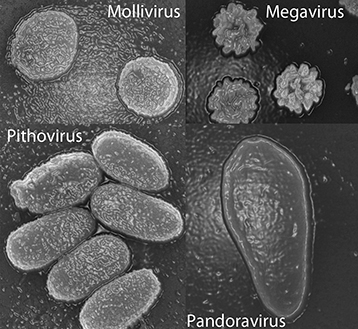It’s not the first time within the last year that scientists have managed to “reanimate” an ancient virus frozen for thousands of years in permafrost, but they more recently reported a “fourth type of giant virus.”

Published in the Proceedings of the National Academy of Sciences, the researchers announced the discovery of Mollivirus sibericum, isolated from a 30,000-year-old sample of permafrost that already yielded the discovery of another giant virus, Pithovirus.
The researchers were able to infect an amoeba with these “largest known DNA viruses.” To be considered a “giant” virus, the Agence France‑Presse explained that the virus has to be longer than one thousandth of a millimeter.
The Mollivirus measured 0.6 micrometers.
“The Mollivirus nucleocytoplasmic replication cycle was analyzed using a combination of ‘omic’ approaches that revealed how the virus highjacks its host machinery to actively replicate,” the study authors wrote. “Surprisingly, the host’s ribosomal proteins are packaged in the virion. Metagenomic analysis of the permafrost sample uncovered the presence of both viruses, yet in very low amount.”
In a news release from the French National Center for Scientific Research, the scientists explained how the Mollivirus differs from some of the other viruses identified in the same sample. In terms of its replication and some other traits, the researchers said the Mollivirus is “more similar to the common viral types, including human pathogens such as Adenovirus, Papillomavirus, or Herpesvirus.” Pithovirus, which was isolated and described from the sample in 2014, replicates more like a Poxvirus, according to the researchers.
“In terms of its shape, mode of replication and metabolism, Mollivirus sibericum thus represents a new type of virus never previously observed and distinct from the three giant virus families discovered to date,” the news release stated.
The study authors said in the abstract that the fact that these two viruses — Mollivirus and Pithovirus — were still able to infect host organisms after thousands of years in the permafrost “should be of concern in a context of global warming.”
“In the presence of a susceptible host, a few particles that are still infectious could indeed be sufficient to cause the resurgence of potentially pathogenic viruses in Arctic regions that are increasingly coveted for their mining and oil resources, and whose accessibility and industrial exploitation have been facilitated by climate change,” the news release stated.
Going forward, the researchers are studying older soil samples, looking for other giant virus types.
(Hattip: Daily Mail, The Blaze)






